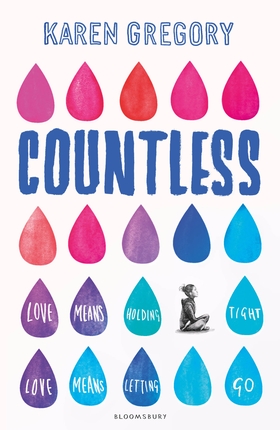Countless is the story of 17-year-old Hedda, who is suffering from a chronic eating disorder and finds herself accidentally pregnant.

She is isolated, depressed much of the time and makes some really questionable choices at certain stages of the book. On the surface, this seems like a recipe for turning readers off: too gloomy, too frustrating, too much darkness. Yet readers have said that while they found Hedda infuriating at times, they also found her lovable.
I’m going to set aside the debate over whether characters ought to be likeable and assume you’ve decided you want to create a character a reader does find likeable. With this in mind, here are some things that helped me, which might be useful to think about as you write your story:
1.Love. You have to care deeply about your characters. I wrote Countless because I was desperate to tell Hedda’s story. I didn’t consciously set out in the first draft to make Hedda likeable. I liked her and that felt like enough for me at the time! The additional nuances of her character came through many rounds of editing, which leads me to:
2.Complexity. Get to know your character as deeply as possible. Find their contradictions, the different layers that make them who they are. Discover what they want. This might not be the thing they think they want and it might not be the thing they ultimately need either. It also may well change as the narrative progresses.
3.Change. I think most readers want to see some sort of change and development in a character and this may be particularly relevant for troubled protagonists. This might not be a journey from ill health to wellness; for some there may never be a magic fix, but there needs to be some sort of change, or realisation they have about themselves or the world and the people around them.
4. Balance. When very troubled protagonists are narrating the story, it can be easy to only portray the dark and difficult things they are experiencing, yet life is rarely as straightforward as that. A character who is very troubled is still likely to have some good days, or even moments. Bringing these out also helps to give the reader a break; for example in Countless, I found moments of lightness in Hedda’s relationship with her neighbour Robin, as well as in her dry sense of humour.
5. Courage. Be brave in writing your character. If there are moments when you think, ‘I can’t write that,’ put that voice to one side and write it anyway. It can always be edited afterwards!
Of course, every story is different and some of the above ideas may not apply to yours, but if I had to pick out one it would be to write characters you care deeply about and you’ll be in a great position to bring your readers along with you.
Karen Gregory has been a confirmed bookhead since early childhood. She wrote her first story about Bantra the mouse aged twelve, then put away the word processor until her first child was born, when she was overtaken by the urge to write. A graduate of Somerville College, Oxford, and a project coordinator by day, she’s become adept at writing around the edges. Strong coffee and a healthy disregard for housework help. Karen lives in Wiltshire with her family. Countless is her first novel. Follow Karen on Twitter here.
Comments